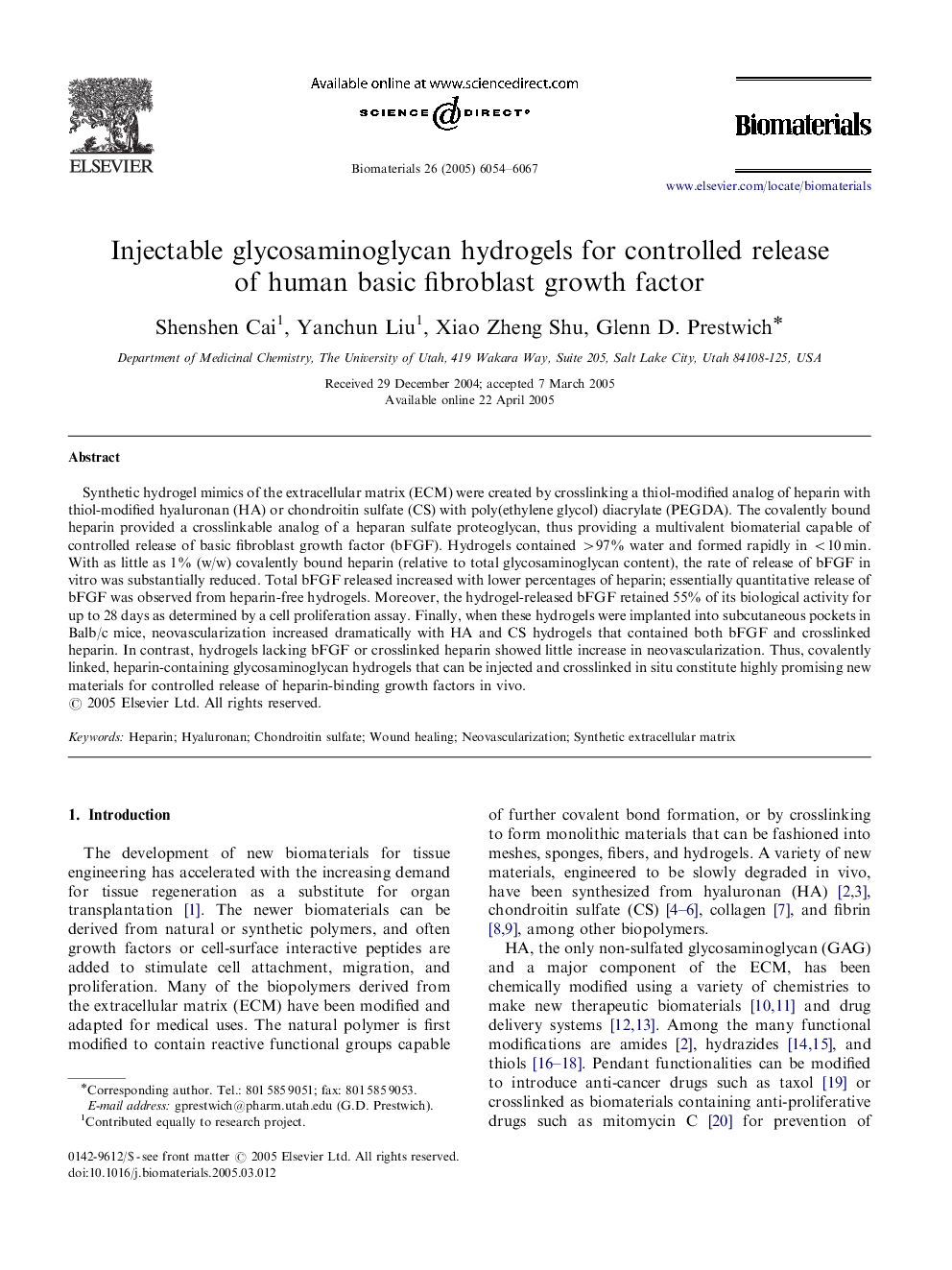| Article ID | Journal | Published Year | Pages | File Type |
|---|---|---|---|---|
| 12223 | Biomaterials | 2005 | 14 Pages |
Synthetic hydrogel mimics of the extracellular matrix (ECM) were created by crosslinking a thiol-modified analog of heparin with thiol-modified hyaluronan (HA) or chondroitin sulfate (CS) with poly(ethylene glycol) diacrylate (PEGDA). The covalently bound heparin provided a crosslinkable analog of a heparan sulfate proteoglycan, thus providing a multivalent biomaterial capable of controlled release of basic fibroblast growth factor (bFGF). Hydrogels contained >97% water and formed rapidly in <10 min. With as little as 1% (w/w) covalently bound heparin (relative to total glycosaminoglycan content), the rate of release of bFGF in vitro was substantially reduced. Total bFGF released increased with lower percentages of heparin; essentially quantitative release of bFGF was observed from heparin-free hydrogels. Moreover, the hydrogel-released bFGF retained 55% of its biological activity for up to 28 days as determined by a cell proliferation assay. Finally, when these hydrogels were implanted into subcutaneous pockets in Balb/c mice, neovascularization increased dramatically with HA and CS hydrogels that contained both bFGF and crosslinked heparin. In contrast, hydrogels lacking bFGF or crosslinked heparin showed little increase in neovascularization. Thus, covalently linked, heparin-containing glycosaminoglycan hydrogels that can be injected and crosslinked in situ constitute highly promising new materials for controlled release of heparin-binding growth factors in vivo.
